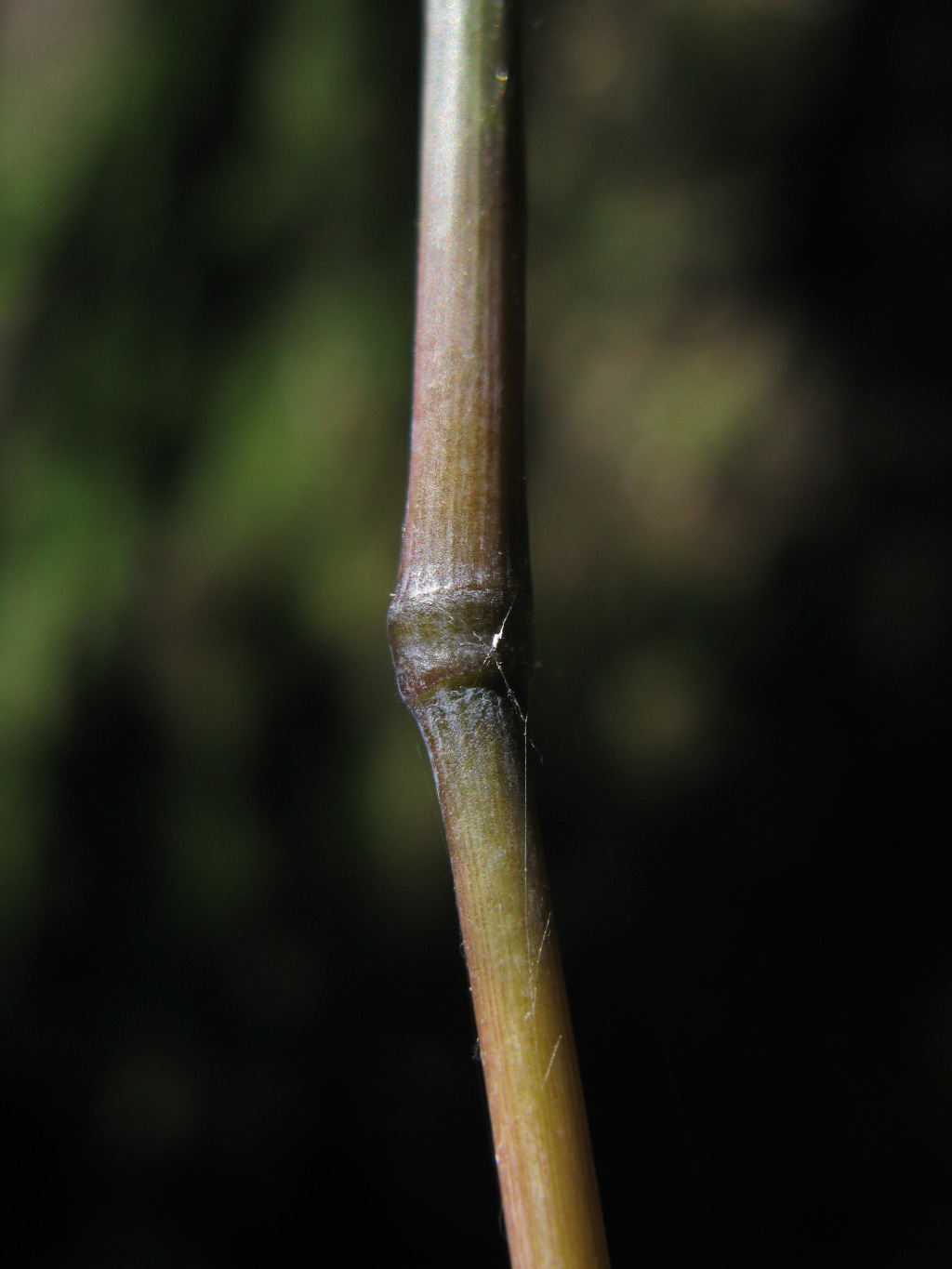Themeda triandra
Forssk. Kangaroo GrassTufted, sometimes glaucous perennial, culms erect, to c. 1 m high, often reddish; leaves glabrous, or the sheath and lower parts of the blade with scattered (rarely abundant) hairs; blade flat or channelled, to 50 cm long and 5 mm wide; ligule minutely fringed, 0.3–1 mm long. Inflorescence commonly drooping or turned to one side, 10–25 cm long, each pedunculate cluster comprising usually 3–10 racemes, each raceme c. 1.5–2.2 cm long (excluding awn), slightly shorter than its spathe; sessile, involucral spikelets usually male, 9–13 mm long; fertile spikelet slightly shorter than those of involucre, its glumes hardened, scabrous to pubescent near apex, callus-like pedicel elongate, with silky brown hairs; sterile lemma about two-thirds as long as glumes; fertile floret inconspicuous, its lemma continuous with base of stout, purplish twice-bent awn, 4–8 cm long; palea usually lacking; pedicellate spikelets usually male, resembling those of involucre. Flowers most of year, mainly Oct.–Mar.
LoM, MuM, Wim, GleP, Brid, VVP, VRiv, MuF, GipP, OtP, WaP, Gold, CVU, GGr, DunT, NIS, EGL, EGU, WPro, HSF, HNF, OtR, Strz, MonT, VAlp. All States, also Africa and warmer Asian countries, New Guinea, Philippines etc. Introduced in New Zealand. One of the most widespread and conspicuous grasses in Victoria, formerly dominant over vast areas of the basalt plains west of Melbourne, elsewhere commonly associated with other grasses in woodland and grassland communities over a wide range of soil types and growing conditions, but not in permanently wet, very dry, saline or heavily shaded sites, rare in subalps and Otway Range.
Walsh, N.G. (1994). Poaceae. In: Walsh, N.G.; Entwisle, T.J., Flora of Victoria Vol. 2, Ferns and Allied Plants, Conifers and Monocotyledons, pp. 356–627. Inkata Press, Melbourne.
 Spinning
Spinning



